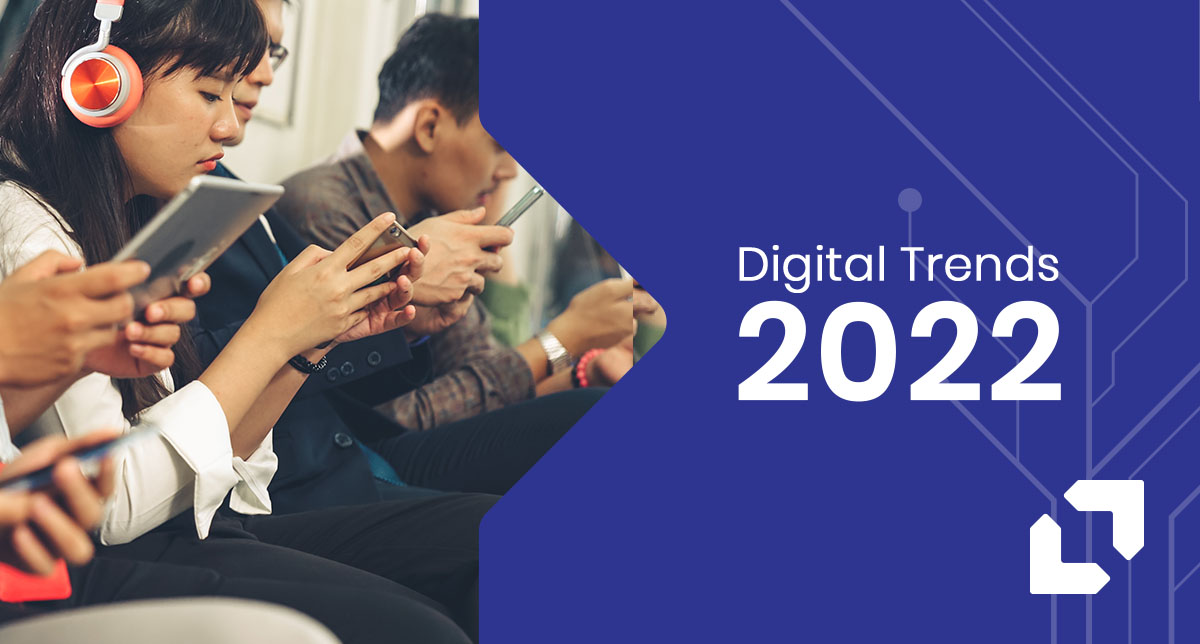From gaining a better understanding of the customer to driving digital innovation - the need for actionable data is at the heart of 2022’s biggest digital trends.
The year 2021 is evidence that the changes brought about by the pandemic are in fact here to stay. Bringing together their observations from the last year, our General Managers have identified the top trends that companies will need to keep top of mind to find success in the year 2022.
Trend 1: Brands will close the experience gap through a data-driven view of the customer.
Customers are no longer willing to wait for the companies they buy from to catch up. As a result, we’ve witnessed companies that adopted a digital-first approach come out on top in the last year. However, not all digital experiences are created equally - an approach that puts customer needs at the forefront is key for long-term business success.
In 2022, consumers will expect brands to close this ‘experience gap’ even further – and data will be an essential piece of the puzzle. While most have been collecting data, the focus will now shift to accessibility and actionable insights to ensure meaningful and valuable personalization.
Yvette Yanne, GM, Asia-Pacific, says that “Demographics have been shifting steadily. The rise of the female economy, empowered silver generation, and the digital native consumer group of Gen Z indicates that the decision-making and purchasing power is shifting. It is more important than ever to create experiences that meet the needs of these consumer groups, without alienating the others – personalization will be crucial to this.”
However, the approach of collecting data and identifying past behavior patterns will not suffice. Companies must make the right data accessible to glean actionable insights from it. From an organizational perspective, this requires teams across regions and departments to share data in order to build a 360° degree view of their customers.
Trend 2: Digital experience inspiration can come from anywhere, the key is in applying it to your own brand.
Consumer expectations of digital experiences have dramatically shifted - gone are the days when consumers measured and compared a brand’s digital experience to those of its competitors within the same space. Today, everyone is a direct competitor in the experience economy.
Scott Wassmer, GM of Americas, says,” Customers are looking for experiences that make their lives easy. The experiences that brands like Netflix, Apple, and Google deliver are now the standard comparison point, irrespective of the industry a company belongs to. Companies need to start looking outside the metaphorical box for inspiration with customer needs serving as the north star.”
Focusing too narrowly on the products sold, rather than the experience created, will leave brands vulnerable. Consumers have set their expectations of a digitally-driven world, which will only grow and evolve in the future.
Trend 3: Getting the digital house in order
McKinsey’s Global Survey of Executives found that the share of digital or digitally enabled products in their portfolio leaped forward by a shocking seven years in the last two years. At the same time, the digitization of their customer and supply-chain interactions and their internal operations also accelerated by three to four years.
The ability to keep up with this acceleration has been critical to a company’s ability to serve its customers better and gain a competitive edge in the market. However, Scott Wassmer, GM of Americas, believes that in the race to stay ahead of the competition, most companies did not have the opportunity to put a lot of forethought into the added integrations.
The same McKinsey report shows that of all the changes that have occurred, the most significant ones are likely to stay – and the customers’ preference for remote interactions is one of them. In light of this, Wassmer states that ”In 2022, companies will need to ensure they're getting the most out of the digital technologies they've added to their ecosystem by removing technical debt and enhancing their customer experiences to get the most out of their investments.”
Trend 4: Managed Services will drive innovation
Brands need to focus on efficient, secure operations today and constant evolution in preparation for tomorrow to thrive. They need a pulse on their business, their customer, and the marketplace. IT teams are a critical part of this equation – technology is an integral part of creating new or improving existing solutions in a digital-first world. Maintaining the status quo with operations and security won’t cut it now or in the future. Yann Gautier, GM Managed Services, says, ”In 2022, the brands that get ahead will be the ones that leverage Managed Services to go beyond just fixing bugs to provide data-driven insights into performance and trends that impact businesses’ tomorrow.”
Managed Services are a necessary part of a business where the instant value comes from improved User Experience, cost predictability, and protection. But the iterative value comes from ongoing evolution driven by data and analytics – the brands that capitalize on this will be the ones to thrive in 2022.
Coming up next in this blog series is the new ways-of-working trends that will impact various industries. Watch this space for more.


